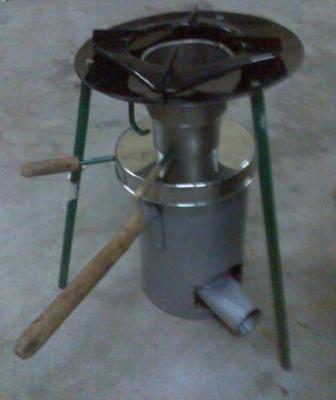D. Ariho, P. Tumutegyereize and K. Bechtel, Uganda December 2010
The Project was concerned with the evaluation of the energy efficiencies of commonly available biomass
fuels in Uganda in a “Champion-2008” Top Lit Updraft (TLUD) gasifier stove. Selected biomass fuels included; Eucalyptus wood from plantations, maize cobs (agro-waste), papyrus, spear grass, noncarbonized briquettes (agro-waste and sawdust) and off-grade jatropha seeds. Moisture content
measurement of biomass fuels was determined using oven-dry method. The energy efficiencies of the
biomass fuels in the “Champion-2008” TLUD gasifier stove lied between 12 and 19%. Maize cobs had the highest energy efficiency of 18.40% and spear grass had the lowest of 12.64%. Maize cobs and papyrus were not significantly different from Eucalyptus wood. Non-carbonized briquettes and off-grade jatropha seeds had a higher operation time compared to the rest of the selected biomass fuels though faced with a problem of higher starting time but able to perform when started. The results obtained indicate that a variety of biomass fuels in Uganda can perform well in the “Champion-2008” TLUD gasifier stove, thus the need for adoption to combat deforestation problem.
See the attached report
http://www.bioenergylists.org/files/BIOMASS FUELS IN A TLUD GASIFIER STOVE.pdf (in pdf) for more detail.

